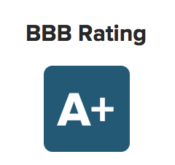As stated elsewhere on this site, breath samples taken by the breathalyzer are only valid if the blood alcohol content (BAC) readings produced are within acceptable tolerance. This requirement is essentially a sub issue of the prosecutor’s obligation to demonstrate that the breath test is working properly. The obvious question that follows is what constitutes acceptable tolerance or variation. In order to understand our explanation, it is important for you to understand certain fundamental facts concerning the Alcotest breath test machine.
The breathalyzer produces a report known as an Alcohol Influence Report (“AIR”). The AIR includes background information concerning the subject and sample involved, as well as statistical information produced as a result of the samples; these are commonly referred to as BAC readings. The readings are reported on the AIR in two ways, first in the form of an infrared result (“IR”) and second as a electrochemical result (“EC”). These are referred to as the IR and EC results. The BAC of a subject for purposes of conviction under N.J.S.A. 39:4-50 is the lowest IR or EC reading that appears on the AIR, rounded downward to the next lowest second decimal.
Because of an issue in the software used by the breathalyzer, the machine is incapable of recording an error for test results that are too variant. As a result, police are required to complete a tolerance worksheet to insure that the BAC readings recorded on the AIR are within the range of acceptable tolerance. If a reported BAC readings fall outside the range of acceptable tolerance then the test results are inadmissible to prove intoxication.
If you have questions about the validity of your BAC results or any other issue concerning a DWI or refusal, our attorneys are available for a free consultation. A lawyer is accessible 24/7 so do not hesitate to contact us any time of day.











